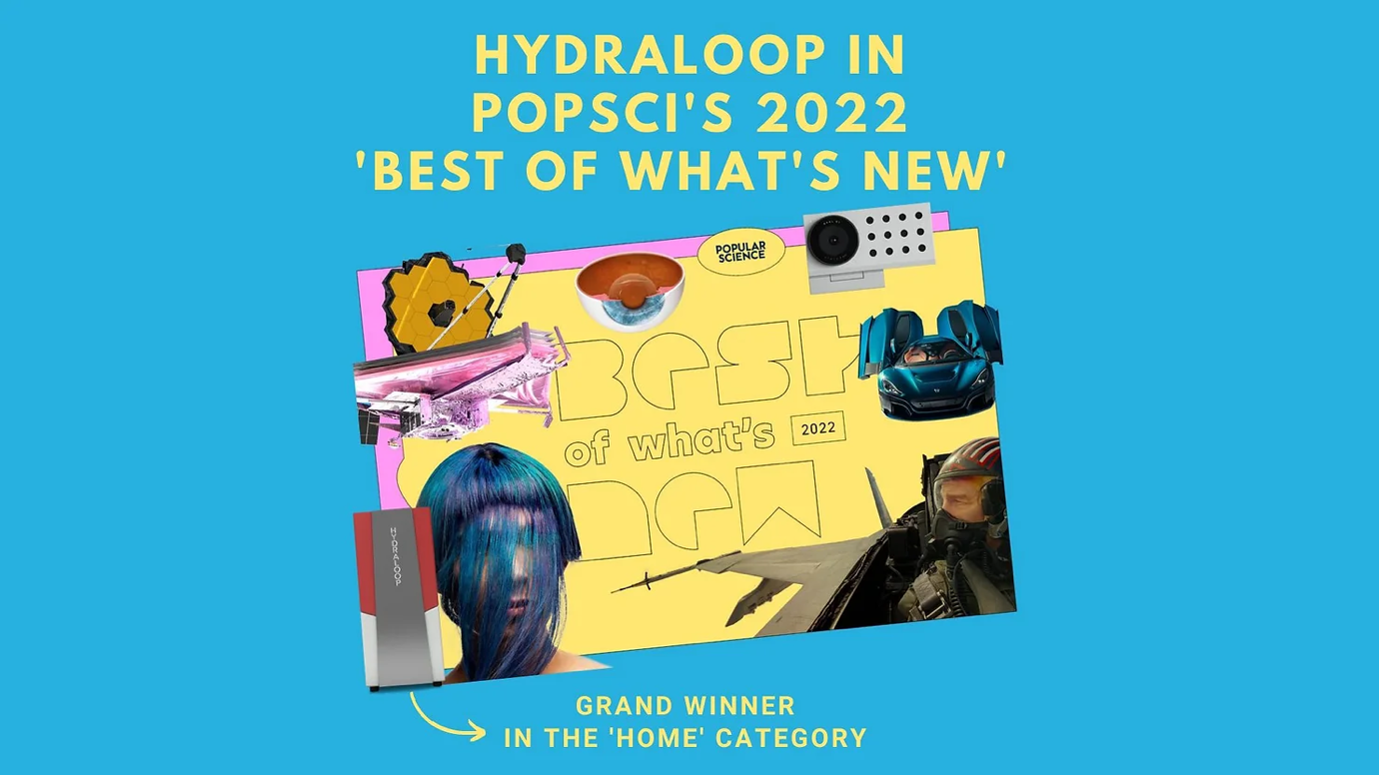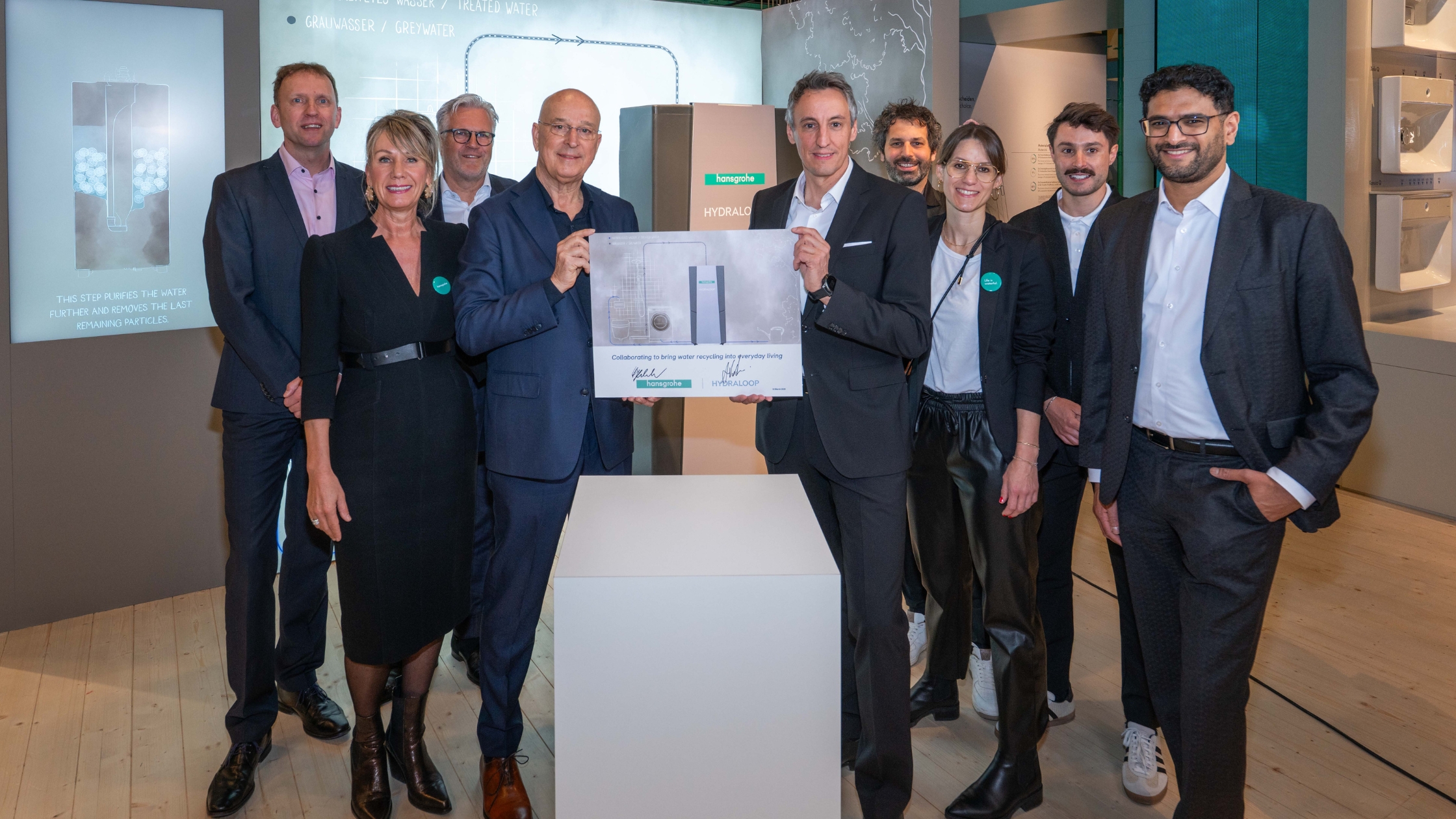6 minute read
A good building is one that reuses water on-site
Unlocking efficiency, sustainability, and growth through on-site water reuse
In the face of escalating climate pressures and urban water shortages, our understanding of what makes a building “good” is evolving. Today, energy efficiency and carbon neutrality are essential, but no longer enough. A truly future-proof building must also be water-smart, and that means reusing water on-site.
At Hydraloop, we believe decentralized water recycling is a core component of sustainable building design. The technology is here. The impact is proven. And pioneering projects around the world are already setting new standards.
Pioneering water reuse in hotels
Hotels are ideal environments to pioneer on-site water reuse. Guests often shower and bathe more during vacations than in everyday life, especially in facilities that offer pools, spas, and wellness experiences. Heating this water requires significant energy. In fact, hot water can account for 5–10% of a hotel’s annual energy costs, depending on size, location, and operational efficiency.
By using water-efficient solutions, hotel operators can significantly reduce both water use and energy consumption. These savings also appeal to sustainability-focused investors, especially those aligned with the EU Taxonomy for sustainable investments.
A standout example is the IHG voco™ Brussels City North Hotel, which opened in September 2023 in Vilvoorde, Belgium. Located next to the Living Tomorrow Innovation Campus, the hotel serves as both a hospitality destination and a living lab for future-forward technologies. In every guest bathroom, visitors enjoy sustainable water comfort thanks to hansgrohe’s water- and energy-saving fixtures and Hydraloop’s greywater recycling system. Shower water from 58 rooms is collected, purified through a cascade of five Hydraloop units, and reused for toilet flushing, saving over 1.2 million liters of water annually.
Another remarkable example is Hotel Nieuw Leven, located on the Texel Islands in the Netherlands and hailed as “the most sustainable hotel in the Netherlands.” From its architecture to its energy systems, every element of the hotel was designed with sustainability at its core. The goal was ambitious: to create a fully off-grid accommodation where comfort and environmental responsibility go hand in hand. The Hydraloop Upfall Shower became the final, crucial component of that vision. This cutting-edge circular system recirculates and purifies water in real time, enabling guests to enjoy long, luxurious showers while saving up to 80% on both water and energy.
The benefits are tangible. For a family of four taking daily 10-minute showers, the system pays for itself in just 5–6 years in the Netherlands—and as little as 3–5 years in Belgium, where water costs are higher. That translates to average savings of €1,200 per year in the Netherlands and €1,875 per year in Belgium. The installation of these circular showers also helped Hotel Nieuw Leven earn a Green Key Gold certification. Notably, it was the first hotel to achieve this recognition using a circular shower solution, setting a new precedent for sustainability standards in the hospitality industry.
This is sustainability in action: smart, efficient, and invisible to the guest, yet making a measurable impact behind the scenes.
Leading by example in public water reuse
When large public buildings take the lead in sustainable water practices, the impact goes far beyond their walls. These are iconic structures, visited by thousands, often daily, and they have the power to educate, influence, and inspire behavioral change at scale. Rather than being passive consumers of resources, they are increasingly becoming catalysts for change.
That’s exactly what the first Net-Positive Mosque in the Middle Easr, the Majid Al Futtaim Mosque, set up to do. Designed to meet the requirements of the BREEAM “Excellent” certification, it stands as a model of sustainability and innovation. By integrating faith, community, and environmental responsibility, the mosque transcends its role as a place of worship to become a beacon of green building practices. The Majid Al Futtaim Mosque employs innovative Net Positive Water strategies to minimise its environmental impact and maximise water efficiency. The mosque’s water demand is met through a combination of recycled sources, significantly reducing reliance on potable water. Treated Sewage Effluent (TSE) from the Tilal Al Ghaf Central plant and an onsite greywater treatment system (Hydraloop) provide water for irrigation and WC flushing. Potable water is reserved exclusively for uses that involve direct human contact, ensuring health and safety standards are maintained.
This same mindset is reshaping other high-profile public buildings. A recent example is a newly built football stadium that integrated Hydraloop systems to treat and reuse greywater from showers and locker rooms. With thousands of athletes and spectators using the facility during peak events, water demand can surge dramatically. By recycling water on-site, usings a Cascade set up from Hydraloop, the stadium reduces its daily consumption significantly, alleviates pressure on the urban water grid, and builds long-term resilience against drought or supply disruptions. Just as importantly, it sends a clear public message: sustainability can scale, and it can do so without compromising performance, comfort, or experience.
Beyond large public venues, this approach is proving vital in caring for vulnerable populations. In Gibraltar, a newly constructed elderly care home embraced water reuse from the start, integrating Hydraloop systems to recycle greywater for non-potable use throughout the facility. By doing so, it not only reduced water consumption and operational costs but also demonstrated that sustainable design can enhance both environmental performance and quality of life. As our societies age and healthcare demands rise, sustainable infrastructure in elderly housing is no longer optional, it’s essential.
Together, these constructions demonstrate that reusing water on-site is not just for homes or hotels.
On-site water recycling as a path to density bonuses
In St. Petersburg, Florida, smart water reuse turned into smart growth. When Archway Partners set out to develop The Flats on 4th, an affordable, age-restricted housing community, they had a clear vision: build sustainably, and build for the future. By integrating advanced greywater recycling into the design, they achieved both. Working with Water Recycling Systems (WRS), Hydraloop’s certified local partner, the project implemented a cascade of seven Hydraloop H600 units to treat and reuse water from showers and baths for toilet flushing—right at the point of use. This decentralized setup required no costly pipe rerouting or central infrastructure and dramatically cut water consumption across all units.
But sustainability didn’t just save resources—it unlocked new opportunities. Thanks to Florida’s progressive incentives for water-efficient buildings, this approach qualified the development for a 35% density bonus, allowing Archway to build 35% more apartments than zoning laws would typically allow. The project also received a $22,000 rebate through the Tampa Bay Water Wise program, recognizing its exceptional savings in potable water use. The Flats on 4th is now seen as a model for future-ready housing: affordable, resource-efficient, and resilient in the face of growing environmental demands.
What makes a building truly good? Efficiency, sustainability, and water reuse
Ultimately, a good building is more than bricks and mortar. It’s a living, breathing system that respects and nurtures its environment while maximizing efficiency and reducing costs. By embracing on-site water reuse, buildings become part of the solution, ensuring that water, one of our planet’s most precious resources, is valued, preserved, and wisely managed for generations to come.





